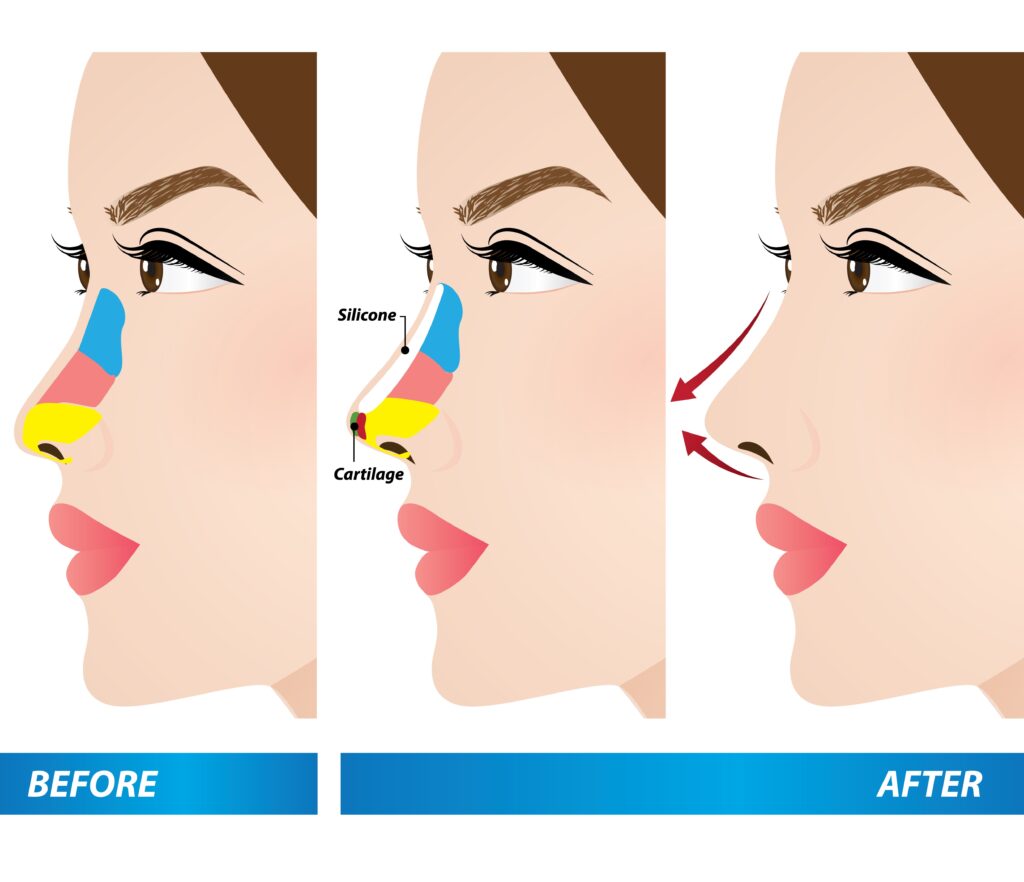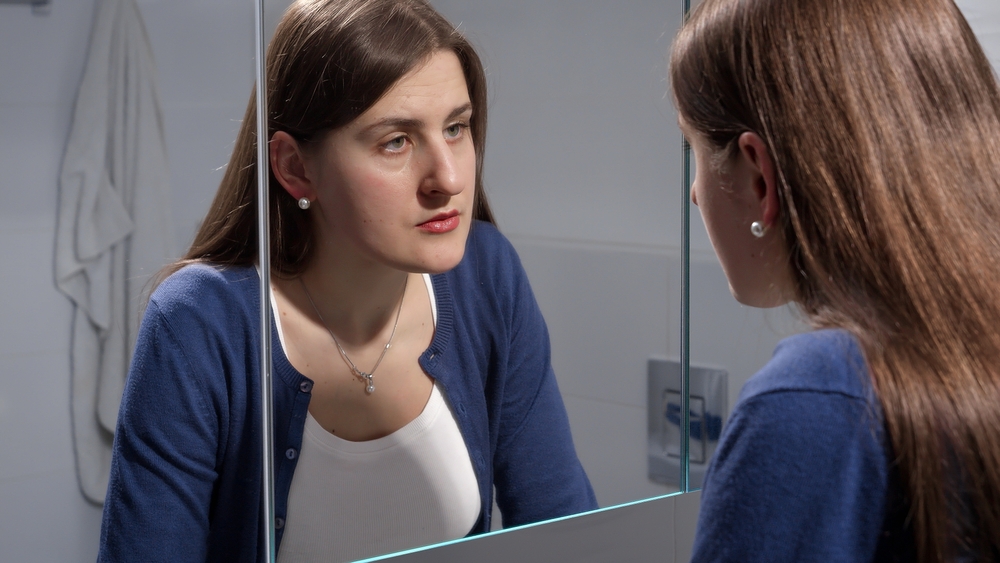Posted by: Maryland ENT in General
Are you unhappy with the shape or size of your nose? Do you have trouble breathing through it, or is it bent or broken due to an accident?
If you are dissatisfied with the function or appearance of your nose, rhinoplasty is a safe and effective surgical procedure that can help you achieve the nose you desire. Keep reading to learn more and if you should consider getting a rhinoplasty to improve the appearance of your nose.
What is Rhinoplasty?

Rhinoplasty is a surgical procedure that involves changing the shape or size of the nose. The lower part of the nose’s structure is cartilage.
The upper part is bone. Rhinoplasty can modify cartilage, bone, skin, or all three. It is often performed to enhance the nose’s appearance, address functional issues, or both.
Reasons for Having Rhinoplasty
Rhinoplasty is a versatile procedure that can fix several aesthetic and functional concerns. The procedure is commonly performed to:
- Fix nose symmetry
- Improve breathing
- Correct hanging columella, which is the bridge of tissue separating the nostrils at the base of the nostrils
- Alter a nasal bump or hump
- Restructure the nose after an injury
- Straighten a crooked or twisted nose
- Reshape, reposition, or resize the nostrils
- Change the width or length of the nose
- Refine abnormally shaped or bulbous nose tips
- Address medical conditions like mild sleep apnea, sinusitis, enlarged turbinates, a deviated septum, or damage to internal nasal structures
Rhinoplasty can also be done to revise a previously unsatisfactory rhinoplasty. If you’re disappointed with the results of your initial procedure, a secondary rhinoplasty, known as revision rhinoplasty, can correct issues with the first one.
Who is a Good Candidate for Rhinoplasty?
You may be a candidate for rhinoplasty if:
- You don’t smoke
- You’re in good health
- You’re not pregnant or nursing
- You have realistic expectations
- You’ve reached facial maturity
What Happens During Rhinoplasty?
Each rhinoplasty is tailored to the patient, depending on their specific goals and anatomy. Although rhinoplasty is usually an outpatient procedure, you’ll still undergo anesthesia, which may be general anesthesia or IV sedation.
There are two types of incisions for rhinoplasty: closed and open. The kind of incision used will depend on how severe the corrections needed are.
Closed Rhinoplasty

If you only need minor corrections, your surgeon at Maryland ENT will likely select closed rhinoplasty. With closed rhinoplasty, your surgeon will create tiny incisions inside your nostrils to minimize visible scarring.
This procedure provides limited access to your entire nasal structure, requiring considerable skill and precision to attain the desired results. Closed rhinoplasty is less invasive than open rhinoplasty. There is less swelling after the procedure, resulting in a shorter recovery time.
Open Rhinoplasty
If significant reshaping, a more serious correction, or revision rhinoplasty is necessary, your surgeon will select open rhinoplasty. Open rhinoplasty is also recommended if you have considerable injuries or deformities.
For this method, your surgeon will make a small incision in the soft tissue separating your nostrils, the columella. The incision will be concealed in the natural contours of your nose to make it discreet.
Your surgeon will then separate your nasal skin from your cartilage and bone, exposing your septum and bridge.
Open rhinoplasty gives complete access to your nasal structure, enabling total nose reconstruction. It allows for greater visibility, increased range of motion, and refinement during the procedure.
After creating the incision, your surgeon can reshape cartilage and bone inside your nose. The procedure may involve removing or adding cartilage or bone as needed.
If cartilage is added, your surgeon can remove it from inside your nose or ear. If more is required, cartilage from your rib or implants from other parts of your body can be used.
Once done, your surgeon will close the incisions with stitches. They will likely use both absorbable stitches inside your nose and external stitches.
They may also put small splints inside and outside your nose to protect it and help it maintain its new shape as it heals. Open rhinoplasty is relatively more invasive, requires more stitches, and has a longer recovery period.
Rhinoplasty takes between 1 to 2 hours to complete. If the procedure is complex, it might take longer.
What to Expect After Rhinoplasty
After rhinoplasty, a staff member will take you to the recovery room to monitor you. Once you’re cleared, you can go home later that day.
Because you cannot drive, you’ll need to arrange for someone to drive you home. If you undergo a complicated rhinoplasty, you may have to stay in the hospital for a few days to recover.
You may experience pain, numbness, and bruising. Additionally, due to swelling, you may find yourself congested.
It may also be from the splints inside your nose. All these should subside within the first week or two. To minimize swelling and bleeding, rest with your head raised above your chest.
Splints are usually removed during your first post-surgery appointment, a week following your procedure. If your surgeon packs absorbent dressings inside your nose, the packing can stay in place for up to a week.
You may have absorbable stitches. These will gradually dissolve, meaning you won’t need to remove them.
How to Reduce Discomfort and Swelling During Recovery

If there are external stitches, your surgeon will remove them about a week after rhinoplasty. Expect your face to feel puffy as you recover. You may also experience headaches. If you’re in a lot of pain, your surgeon may prescribe medication to help you feel more comfortable.
Rhinoplasty may affect the area around your eyes. For a few weeks, you might experience swelling, bruising, and temporary numbness around your eyes.
Sometimes, this could last up to a year. Applying ice packs or cold compresses can help reduce swelling and discoloration.
Your surgeon will provide detailed post-surgery instructions before you leave, including avoiding the following:
- Swimming
- Blowing your nose
- Excessive chewing
- Prolonged sun exposure
- Pulling clothes over your head
- Vigorously brushing your teeth
- Intense physical activities like jogging and aerobics
- Smiling, laughing, and other facial expressions that need a lot of movement
While recovery varies from patient to patient, you should be able to resume work in about 7 to 10 days. It’s essential to follow all instructions from your surgeon and attend your post-surgery appointments at Maryland ENT to ensure a smooth recovery and address any concerns promptly.
When Will You See the Results?
It can take a year or more for all the swelling in your nose to resolve. However, most patients notice an improvement in their appearance within a week or two.

At the 6-month mark, the shape of your nose will be more defined. It can take 12 to 18 months to see the final results of your rhinoplasty. The results typically last a lifetime.
Achieve the Nose of Your Dreams with Rhinoplasty
Rhinoplasty at Maryland ENT can allow you to make aesthetic changes to your nose, correct functional issues, and boost your self-confidence.
Are you considering rhinoplasty? Learn more about this procedure by requesting an appointment at Maryland ENT in Lutherville and Baltimore, MD, today! Shouldn’t you love the way you look?



